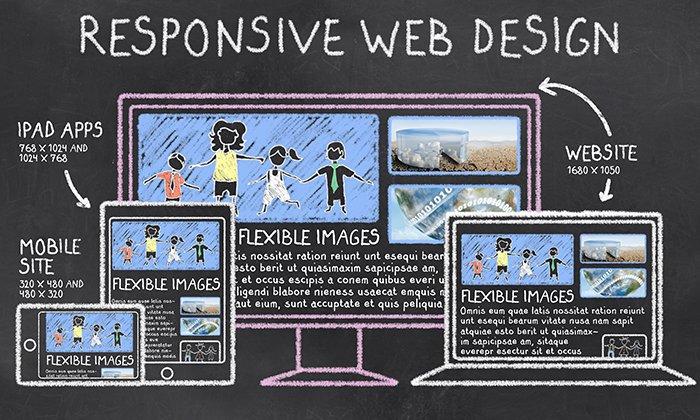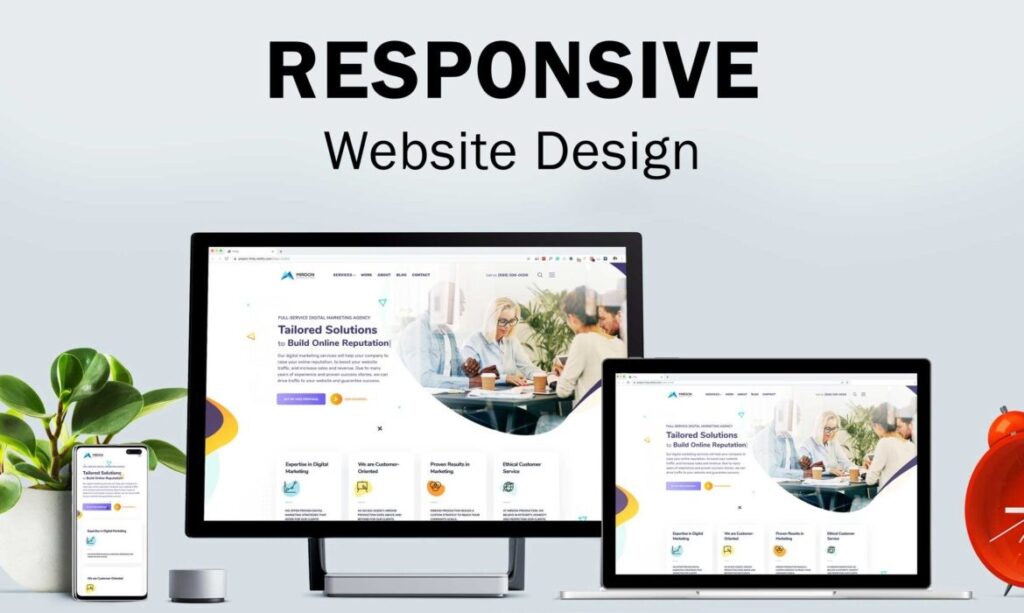
Your company’s website serves as its public face and frequently the initial point of contact. More is needed to stand out from the plethora of websites competing for visitors than just a basic template. A customized approach to creating a website that fits your particular audience, conveys the essence of your brand, and satisfies your particular business requirements is provided by custom web design.
This in-depth article explains custom web design, identifying the essential components involved, outlining its advantages, and outlining the procedures for building a bespoke website for your company. You’ll be well aware of the reasons why investing in bespoke web design is essential for businesses looking to prosper in the digital sphere.

What Is Custom Web Design?
Custom web design is building a website from the ground up that is unique to a company’s requirements, objectives, and brand. A blank canvas is the starting point for unique web design, in contrast to template-based websites that provide pre-designed layouts and functionalities. With this strategy, companies may collaborate with experts to design a website that is all their own, expressing their corporate identity, adding needed features, and offering the best possible user experience. Visit smartlydone.com to find out more about contemporary custom web design solutions.
Fundamentals of Personalized Web Design
The target market, competitive environment, and long-term objectives of the company must all be thoroughly understood before creating a custom website. Every element of the website, including the underlying programming and graphic design, is carefully designed to complement the goals of the company. Whether it’s a corporate website with comprehensive service offers or an e-commerce site with intricate product listings, bespoke web design guarantees that the website is completely optimized to match the unique demands of the business. The following are the main components of unique web design:
1. Brand Identity and Visual Design
Custom web design enables individuals or organizations to create a site that embodies their brand identity. This includes selecting color schemes, typography, imagery, and overall aesthetic elements that resonate with the brand. A consistent and well-designed visual identity helps build brand recognition and trust with visitors.
2. User Experience (UX) Design
The aim of UX design is to make your website simple and intuitive for users. For example, user experience (UX) is prioritised greatly in bespoke web design. The website’s layout and navigation are well thought out to make sure users can quickly find what they need, whether it’s to make a purchase or get in touch with the business. This might include organizing the product categories organically or including a prominent “Contact Us” button on every page. Additionally, UX design ensures that the website loads quickly, is user-friendly, and works well across all platforms, all of which contribute to a seamless user experience.
3. Responsive Design
Responsive design in custom web development ensures your website adapts seamlessly to any device or screen size. For instance, if a user switches from their computer to their phone, the site will automatically reformat to fit the smaller screen without losing any functionality. This makes your visitors stay on your site longer and engage more with what you offer.
4. Search Engine Optimization (SEO)
SEO best practices are included from the ground up into custom site design. To raise search engine ranks, this entails optimizing the URL structure, content, meta tags, pictures, and site structure. More organic traffic may be generated by businesses with a bespoke website since it is more responsive to sophisticated SEO tactics and improves their presence in search engine results.
5. Functionality and Custom Features
Being able to include unique features and capabilities that are particular to the company is one of the biggest benefits of custom web design. A booking system, interactive product filters, or intricate forms may all be developed using custom web design, enabling the creation of unique features that improve user experience and expedite corporate processes.
6. Security
Custom web design includes robust security measures tailored to the specific needs of the business. This might involve custom code to prevent vulnerabilities, secure hosting solutions, and regular updates to protect against emerging threats.
7. Scalability
Because custom web design is naturally scalable, it is possible to add new pages, features, and integrations without having to make any changes to the current website. This guarantees that the company website can adjust to the evolving demands of the enterprise, be it growing into new markets, introducing new goods, or boosting online traffic.
Benefits of Custom Web Design
As a business owner, it is crucial to ensure your web design strategies align to your organizational goals. Check out the following benefits of custom web design to help you create the best use cases and strategies in your company.
1. Unique Brand Representation
A custom website is a direct reflection of your brand. It enables you to create a site that is completely aligned with your brand’s identity, helping to differentiate your business from competitors. This unique representation can significantly enhance brand perception and customer loyalty.
2. Tailored User Experience
User experience is prioritized in custom web design. You may make a website that offers a smooth and delightful experience in this way. This raises conversion rates and enhances client satisfaction.
3. Improved Search Engine Rankings
With SEO considerations built into the design process, a custom website is better positioned to achieve higher search engine rankings. This leads to more organic traffic, which ultimately generates more leads and sales for your business.
4. Flexibility and Control
Outlining your aims and objectives in detail is the first step in creating a unique website. Think about the goals you have for your website, such as increasing brand exposure, lead generation, or sales. Establishing these objectives early on will influence the whole design process and guarantee that your website is purposefully designed to meet these particular objectives.
5. Enhanced Security
Custom web design includes tailored security measures that are specific to your website’s requirements. It minimizes the risk of cyber-attacks and data breaches to safeguard your business and your clients.
6. Scalability for Future Growth
A custom website is designed with future growth in mind. As your company expands, your website can be easily modified to accommodate new products, services, and market demands. This ensures that your organization’s website remains relevant as your business evolves.

Step-Guide to Custom Web Design for Businesses
Are you planning to customize your website? Below is a step-by-step guide to customize a business website:
1. Define Your Goals and Objectives
Outlining your aims and objectives in detail is the first step in creating a unique website. Think about the goals you have for your website, such as increasing brand exposure, lead generation, or sales. Establishing these objectives early on will influence the whole design process and guarantee that your website is purposefully designed to meet these particular objectives.
2. Conduct Market and Competitor Research
Thorough market and competition research must be done before beginning any design work. Making a website that stands out requires an understanding of your target audience, their needs, and the competitive environment.
3. Create a Project Plan and Timeline
Custom web design is a complex process that requires careful planning. Develop a detailed project plan that outlines each phase of the design and development process, including timelines, milestones, and deliverables. This plan will serve as a roadmap for the project and help keep everything on track.
4. Work on Wireframes and Mockups
Once the goals and plan are in place, the next step is to create wireframes and mockups. Wireframes are basic layouts that outline the structure of the website, while mockups are more detailed visual representations of the final design. This step is crucial in visualizing the site’s layout and functionality before moving into development.
5. Develop and Design the Website
With the wireframes and mockups approved, the development and design phase begins. This involves coding the website, integrating custom features, and ensuring that the design aligns with the brand’s identity. During this phase, designers and developers work closely together to bring the vision to life.
6. Test the Website
Before launching, it’s essential to thoroughly test the website to ensure it functions correctly across all devices and browsers. This includes checking for any bugs, broken links, or performance issues. User testing is also valuable in gathering feedback and making any necessary adjustments.
7. Launch the Website
This involves moving the site from a development environment to a live server. Post-launch, it’s important to monitor the website’s performance and make any adjustments as needed.
8. Maintain and Update the Website
While performance optimization takes care of broken links and other related issues, regular content updates maintain the website interesting, dynamic, and optimized for search engines. In order to keep the website flexible and responsive to evolving user demands, maintenance also entails adding new features and enhancements depending on customer input and business expansion. In order to defend against cyberattacks, security is a crucial component that calls for frequent software upgrades, vulnerability fixes, and threat monitoring. You make sure it continues to be a valued asset that facilitates a smooth user experience and contributes to the long-term success of your company.
Important Considerations When Customizing Your Website
Here are the important things you need to consider when customizing your business website:
1. Budget
Compared to pre-made templates, bespoke web design usually entails more prices, thus it’s important to set a reasonable budget. Depending on the intricacy of the design, the functionality that is needed, and the degree of customisation that is necessary, these expenses might vary greatly.
Beyond the initial design and development expenses, it’s important to account for ongoing costs such as maintenance, updates, and potential scalability to accommodate future growth. Allocating resources for content creation, SEO optimization, and security features is also essential.
2. Timeframe
Custom web design takes time, often several months, depending on the complexity of the project. Ensure you have a realistic timeline in place and are prepared for the time investment required.
It might take eight to twelve weeks to design and create a basic website. However, the project may take up to six months or longer if you’re building an e-commerce platform with complex features like user accounts, payment gateways, and a unique content management system. You will go through a number of stages throughout this period, such as preliminary discussions, design iterations, development, testing, and final changes, all of which call for close attention to detail and teamwork between you and the design team.
3. Content Strategy
Its resonance with the target audience is ensured by a carefully thought-out content strategy. When combined with bespoke site design, this tactic improves search engine optimization (SEO) efforts by generating high-quality, pertinent content that increases user engagement and leads to conversions. Businesses may increase website exposure, user experience, and long-term success by giving content planning top priority.
4. SEO Strategy
From the beginning of the design process, SEO should be included. This include conducting keyword research, optimizing pages, and making sure the website is set up to be search engine friendly.In order to increase exposure and ranking, the material should also be optimized for search engines by including pertinent keywords, meta tags, and descriptions.
5. Visual Hierarchy
Logically organized information should draw the user’s attention to the most crucial pieces first. Strategic use of color, size, contrast, and space may accomplish this. Additionally, the website’s navigation should be clear, easy to use, and consistent throughout. With as few clicks as possible, users should be able to locate what they need.
How An Expert In Web Design Can Assist
Web designers are skilled in using a range of tools and technology to create aesthetically pleasing designs and successfully provide the desired user experience. They also collaborate with web developers to bring the design to life and ensure that the outcome is accessible, responsive, and performance-optimized.
Web designers are adept at producing visually beautiful designs and successfully providing the intended user experience by utilizing a variety of tools and technologies. In order to make the design a reality and guarantee that the finished result is accessible, responsive, and performance-optimized, they also work in tandem with web developers.
If you need a website with interactive features, sophisticated e-commerce capabilities, or a distinctive visual style, a professional can create it.Working together with a web design expert guarantees that you will have access to continuing maintenance and support. This is essential to maintaining the security, functionality, and updates of your website over time.
While custom web design can be a significant investment, working with a professional can save you time and money in the long run. They can help avoid costly mistakes, streamline the development process, and see to it that the final product meets your expectations.
Conclusion
Personalized web design enhances user experience and can assist business owners in getting superior outcomes in online marketplaces. It’s one method to think about what your company will require in the future. Keep in mind that scalable website design will make upgrades easier as your company expands.Speak with a site designer right now.

